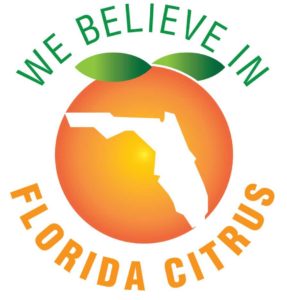When HLB was confirmed in Florida in 2005, there were some pronouncements that trees infected with the disease would only survive for a few months, maybe a year. While the battle has been hard — production has been reduced by 70% — you are still producing fruit, and many believe the industry remains viable despite the disease.
It is easy to understand why people inside and out of the citrus industry would be discouraged by HLB, given the stats and production curve. For that reason, we will be launching a new initiative here at Florida Grower magazine in the coming year called We Believe in Florida Citrus. We will point out all the reasons why we should have confidence in the future of Florida’s signature crop. There’s a lot of them.
Why We Believe
First and foremost, we believe in Florida citrus because of you and the innovations you’ve developed in your own groves. Many of these involve plant nutrition, which focuses on tree and root health. These programs have helped keep trees productive for far longer than they would have otherwise.
You are planting trees. No doubt we need more planting, but many of you are illustrating your confidence by putting trees in the ground. You are taking advantage of planting programs like CRAFT (Citrus Research and Field Trials) project. That’s great because it is adding vital acres into production and, better yet, will yield invaluable data on tree performance and the success of various production programs.
While we hoped science would have uncovered more, faster, in the fight against HLB, there’s a multitude of research projects out there that have or could bear fruit. Research points to the vital importance of root health, which led many to spoon feed fertilizer through more numerous irrigation applications. We’ve learned better, more economical and sustainable ways to manage the psyllid. Scientists are discovering the potentially important role cover crops, compost, and soil biology play in promoting tree health. Researchers studied how to adapt citrus under protective screen to fit in Florida. Now, a number of you are growing citrus under these structures. In fact, some predict there could be as many as 1,000 acres of trees under cover within five years.
Could more breakthroughs be on the horizon? The big buzzword lately is peptides. Academics and commercial companies are pouring through a multitude of compounds to uncover one that could be applied economically to control or kill the HLB bacteria in trees. Plant breeders from UF/IFAS and USDA are breeding new rootstocks and varieties for resistance. All of this adds up to us being much closer to a solution than where we started 15 years ago. All good reasons to believe in Florida citrus.
Join the Conversation
In the coming year, we will be engaging with you and leadership throughout the industry to reinforce the positive message that we will survive HLB. We have products in fresh fruit and orange juice that are in high demand currently, thanks, in part, to COVID-19. We must help each other find ways to plant trees and increase production at a competitive, sustainable price, combined with marketing to grow consumption. We can. We Believe in Florida Citrus.










